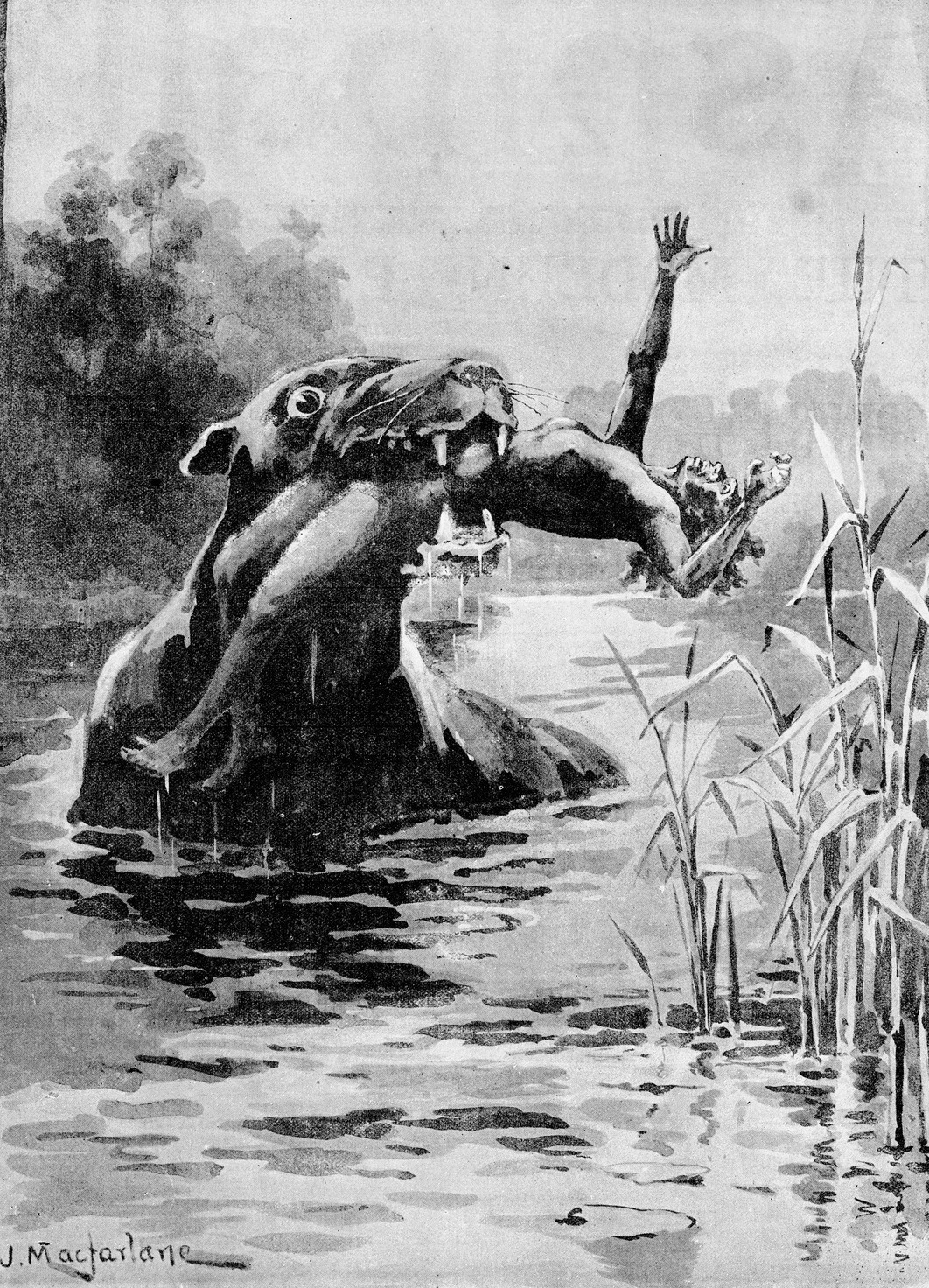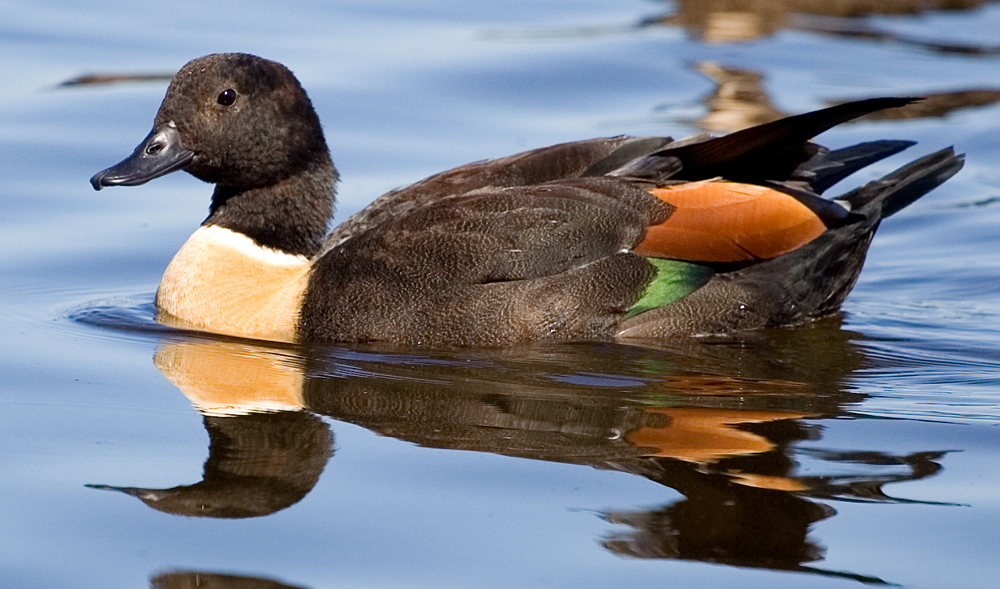|
Mulyawonk
The Muldjewangk or Mulyawonk is a water-creature in Ngarrindjeri mythology that inhabited the Murray River, particularly Lake Alexandrina.Fargher, JohnFleurieu Peninsula Swamps Aboriginal Values - Spirits and mythological creaturesDepartment for Environment and Water. Retrieved 17 June 2025. It was used as a deterrent for Aboriginal children who wished to play near the riverside after dark. Sometimes they are portrayed as evil merfolk, and other times as a gargantuan monster. Accounts are inconsistent as to whether there are many of the creatures, or a single "The Muldjewangk". A legend tells of a Muldjewangk who once attacked a steamboat owned by European settlers. The captain saw two great hands grasping the hull of the boat so he grabbed his gun. Aboriginal elders on board warned the captain not to shoot, but their pleas fell on deaf ears. The elders warned the captain that he would suffer as a result of his actions. Soon after, the captain broke out in weeping red blisters ... [...More Info...] [...Related Items...] OR: [Wikipedia] [Google] [Baidu] |
Ngarrindjeri
The Ngarrindjeri people are the traditional Aboriginal Australian people of the lower Murray River, eastern Fleurieu Peninsula, and the Coorong of the southern-central area of the state of South Australia. The term ''Ngarrindjeri'' means "belonging to men", and refers to a "tribal constellation". The Ngarrindjeri actually comprised several distinct if closely related tribal groups, including the Jarildekald people, Jarildekald, Tanganekald people, Tanganekald, Meintangk people, Meintangk and Ramindjeri, who began to form a unified cultural bloc after remnants of each separate community congregated at Raukkan, South Australia (formerly Point McLeay Mission). A descendant of these peoples, Irene Watson, has argued that the notion of Ngarrindjeri identity is a cultural construct imposed by settler colonialists, who bundled together and conflated a variety of distinct Aboriginal cultural and kinship groups into one homogenised pattern, now known as Ngarrindjeri. Historical designa ... [...More Info...] [...Related Items...] OR: [Wikipedia] [Google] [Baidu] |
Bunyip
The bunyip is a creature from the aboriginal mythology of southeastern Australia, said to lurk in swamps, billabongs, creeks, riverbeds, and waterholes. Name The origin of the word ''bunyip'' has been traced to the Wemba-Wemba or Wergaia language of the Aboriginal people of Victoria, in South-Eastern Australia. The word ''bunyip'' is usually translated by Aboriginal Australians today as "devil" or "evil spirit". This contemporary translation may not accurately represent the role of the bunyip in pre-contact Aboriginal mythology or its possible origins before written accounts were made. Some modern sources allude to a linguistic connection between the bunyip and Bunjil, "a mythic 'Great Man' who made the mountains, rivers, man, and all the animals". The word ''bahnyip'' first appeared in the ''Sydney Gazette'' in 1812. It was used by James Ives to describe "a large black animal like a seal, with a terrible voice which creates terror among the blacks". Distribution The ... [...More Info...] [...Related Items...] OR: [Wikipedia] [Google] [Baidu] |
Australian Aboriginal Religion And Mythology
Australian Aboriginal religion and mythology is the sacred spirituality represented in the stories performed by Aboriginal Australians within each of the language groups across Australia in their ceremonies. Aboriginal spirituality includes the Dreamtime (''the Dreaming''), songlines, and Aboriginal oral literature. Aboriginal spirituality often conveys descriptions of each group's local cultural landscape, adding meaning to the whole country's topography from oral history told by ancestors from some of the earliest recorded history. Most of these spiritualities belong to specific groups, but some span the whole continent in one form or another. Antiquity An Australian linguist, R. M. W. Dixon, recording Aboriginal myths in their original languages, encountered coincidences between some of the landscape details being told about within various myths, and scientific discoveries being made about the same landscapes. In the case of the Atherton Tableland, myths tell of the o ... [...More Info...] [...Related Items...] OR: [Wikipedia] [Google] [Baidu] |
Murray River
The Murray River (in South Australia: River Murray; Ngarrindjeri language, Ngarrindjeri: ''Millewa'', Yorta Yorta language, Yorta Yorta: ''Dhungala'' or ''Tongala'') is a river in Southeastern Australia. It is List of rivers of Australia, Australia's longest river at extent. Its Tributary, tributaries include five of the next six longest rivers of Australia (the Murrumbidgee River, Murrumbidgee, Darling River, Darling, Lachlan River, Lachlan, Warrego River, Warrego and Paroo Rivers). Together with that of the Murray, the catchments of these rivers form the Murray–Darling basin, which covers about one-seventh the area of Australia. It is widely considered Australia's most important irrigated region. The Murray rises in the Australian Alps, draining the western side of Australia's highest mountains, then meanders northwest across Australia's inland plains, forming the border between the States and territories of Australia, states of New South Wales and Victoria (Australia), Vi ... [...More Info...] [...Related Items...] OR: [Wikipedia] [Google] [Baidu] |
Lake Alexandrina (South Australia)
Lake Alexandrina is a coastal freshwater lake located between the Fleurieu and Kangaroo Island and Murray and Mallee regions of South Australia, about south-east of Adelaide. The lake adjoins the smaller Lake Albert (together known as the Lower Lakes) and a coastal lagoon called The Coorong to its southeast, before draining into the Great Australian Bight via a short, narrow opening known as Murray Mouth. Nomenclature Aboriginal naming Aboriginal people having an association with the lake were reported as knowing it by such names as ''Mungkuli,'' ''Parnka'' and ''Kayinga.'' European naming English settlers named the lake after Princess Alexandrina, niece and successor of King William IV of Great Britain and Ireland. When the princess ascended the throne and took the name Queen Victoria, there was some talk of changing the name of the lake to Lake Victoria, but the idea was dropped. Description Lake Alexandrina is located north of Encounter Bay and east of Fleurieu Penins ... [...More Info...] [...Related Items...] OR: [Wikipedia] [Google] [Baidu] |
Aboriginal Australians
Aboriginal Australians are the various indigenous peoples of the Mainland Australia, Australian mainland and many of its islands, excluding the ethnically distinct people of the Torres Strait Islands. Humans first migrated to Australia (continent), Australia 50,000 to 65,000 years ago, and over time formed as many as 500 List of Aboriginal Australian group names, language-based groups. In the past, Aboriginal people lived over large sections of the continental shelf. They were isolated on many of the smaller offshore islands and Tasmania when the land was inundated at the start of the Holocene Interglacial, inter-glacial period, about 11,700 years ago. Despite this, Aboriginal people maintained extensive networks within the continent and certain groups maintained relationships with Torres Strait Islanders and the Makassar people, Makassar people of modern-day Indonesia. Over the millennia, Aboriginal people developed complex trade networks, inter-cultural relationships, law ... [...More Info...] [...Related Items...] OR: [Wikipedia] [Google] [Baidu] |
Merfolk
Merfolk, Mercreatures, Mermen or Merpeople are legendary water-dwelling, human-like beings. They are attested in folklore and mythology throughout the ages in various parts of the world. Merfolk, Merpeople, or simply Mer refers to humanoid creatures that live in deep waters like Mermaids, Sirens, Cecaelia etc. In English, female merfolk are called mermaids, although in a strict sense, mermaids are confined to beings who are half-woman and half-fish in appearance; male merfolk are called mermen. Depending on the story, they can be described as either ugly or beautiful. Chinese ''rényú'' () stands for "merfolk", but in ancient geographical or natural historical tracts, the term referred to "human-fish" or "man-fish" purported to inhabit rivers or lakes in certain parts of China. The Japanese analogue '' ningyo'' () likewise translates to "human-fish" while, at the same time, having also applied to various human-like fish recorded in writings from medieval times into the Edo Perio ... [...More Info...] [...Related Items...] OR: [Wikipedia] [Google] [Baidu] |
Steamboat
A steamboat is a boat that is marine propulsion, propelled primarily by marine steam engine, steam power, typically driving propellers or Paddle steamer, paddlewheels. The term ''steamboat'' is used to refer to small steam-powered vessels working on lakes, rivers, and in short-sea shipping. The development of the steamboat led to the larger steamship, which is a seaworthy and often ocean-going ship. Steamboats sometimes use the ship prefix, prefix designation SS, S.S. or S/S (for 'Screw Steamer') or PS (for 'Paddle Steamer'); however, these designations are most often used for steamships. Background Limitations of the Newcomen steam engine The first steamboat designs used Newcomen atmospheric engine, Newcomen steam engines. These engines were large, heavy, and produced little power, which resulted in an unfavorable power-to-weight ratio. The heavy weight of the Newcomen engine required a structurally strong boat, and the reciprocating motion of the engine beam required a compli ... [...More Info...] [...Related Items...] OR: [Wikipedia] [Google] [Baidu] |
Australian Aboriginal Elder
Australian Aboriginal elders are highly respected people within Australia and their respective Aboriginal and Torres Strait Islander communities. An elder has been defined as "someone who has gained recognition as a custodian of knowledge and lore, and who has permission to disclose knowledge and beliefs". They may be male or female, and of any age, but must be trusted and respected by their community for their wisdom, cultural knowledge and community service. Elders provide support for their communities in the form of guidance, counselling and knowledge, which help tackle problems of health, education, unemployment and racism, particularly for younger people. They may be distinguished as one of two types: community elders and traditional elders. Elders play an important role in maintenance of culture, songs, oral histories, sacred stories, Aboriginal Australian languages, and dance, and are also educators who demonstrate leadership and skills in resolving conflicts. Elders al ... [...More Info...] [...Related Items...] OR: [Wikipedia] [Google] [Baidu] |
Blister
A blister is a small pocket of body fluid (lymph, serum, plasma, blood, or pus) within the upper layers of the skin, usually caused by forceful rubbing (friction), burning, freezing, chemical exposure or infection. Most blisters are filled with a clear fluid, either serum or plasma. However, blisters can be filled with blood (known as "blood blisters") or with pus (for instance, if they become infected). Smaller blisters are called ''blebs''. The word "blister" entered English in the 14th century. It came from the Middle Dutch and was a modification of the Old French , which meant a leprous nodule—a rise in the skin due to leprosy. In dermatology, the words cutaneous condition#Vesicle, ''vesicle'' and ''bulla'' refer to blisters of smaller or greater size, respectively. Some sources recommend not to pop a blister. If popped, bacteria can enter. Excess skin should not necessarily be removed as the top layer protects the soft tissue underneath. However, some sources a ... [...More Info...] [...Related Items...] OR: [Wikipedia] [Google] [Baidu] |
Seaweed
Seaweed, or macroalgae, refers to thousands of species of macroscopic, multicellular, marine algae. The term includes some types of ''Rhodophyta'' (red), '' Phaeophyta'' (brown) and ''Chlorophyta'' (green) macroalgae. Seaweed species such as kelps provide essential nursery habitat for fisheries and other marine species and thus protect food sources; other species, such as planktonic algae, play a vital role in capturing carbon and producing at least 50% of Earth's oxygen. Natural seaweed ecosystems are sometimes under threat from human activity. For example, mechanical dredging of kelp destroys the resource and dependent fisheries. Other forces also threaten some seaweed ecosystems; for example, a wasting disease in predators of purple urchins has led to an urchin population surge which has destroyed large kelp forest regions off the coast of California. Humans have a long history of cultivating seaweeds for their uses. In recent years, seaweed farming has become a global ... [...More Info...] [...Related Items...] OR: [Wikipedia] [Google] [Baidu] |







